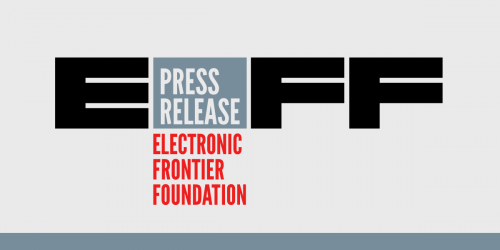In a recent review of the HP Color LaserJET CM3530 printer, the magazine Government Computer News called out the use of tracking codes -- which GCN referred to as "a secret spy program" -- as the biggest problem with that printer. GCN found that the yellow dots produced by this printer particularly degraded print quality and noted that some people would question the "logic or appropriateness" of having printers produce the dots at all; it concluded that even people who didn't object to the tracking codes in principle would regret the poor print quality they produced in this case.
The review also credited EFF for discovering and exposing this issue. (In fact, we first learned about it through other journalists' reports and discussions by privacy activists like Lauren Weinstein -- but we were the first to publish how some of the tracking systems work, and we've worked to bring this issue to the public's attention and figure out how the government persuaded printer companies to cooperate.)
MIT researcher Benjamin Mako Hill, who's collaborated with us to produce the Seeing Yellow campaign, described product behaviors like the printer tracking dots as "antifeatures" in a 2007 article. Hill says "[a]n antifeature [...] is functionality that a technology developer [would] charge users to not include [where i]t is more difficult for [manufacturers] to limit [a product] than it is to leave them unconstrained, and the limit is not something that any user would request". He also notes that "[s]ometimes, as in the case with many DRM systems, users cannot pay to turn their antifeatures off at all!" That's true here as well: printer manufacturers haven't reacted to users' requests to disable tracking functions.
Sometimes a particular antifeature is ubiquitous within an industry. Documents we've begun to receive in response to our FOIA requests suggest that the government may have convinced all printer manufacturers to put some kind of tracking mechanism in every color laser printer. Major music labels used to insist on DRM for virtually all music sold on-line (though not for precisely the same music sold on CD). When an antifeature is extremely widespread, it can start to appear normal, and it can even be surprising when product reviewers characterize it as a problem. If everybody in an industry is doing something, it may seem at best redundant to complain about specific instances of the problem.
But comprehensive product reviews and consumer advocacy by journalists are essential parts of the competitive process. Accepting antifeatures as normal merely because they are widespread guarantees that they will remain widespread, and when product reviewers assume that consumers are powerless to influence industry behavior, they ensure that consumers will remain powerless. Building consumer awareness of product design decisions starts with discussing these decisions in the context of individual products -- as the late technology journalist and consumer advocate Ed Foster often did in criticizing DRM antifeatures in his GripeLog. Surely the willingness of people like Ed Foster to insist that consumers can and should complain about these misfeatures has been an important factor in the music industry's long-awaited move away from them. And they help spread the message that competitors can differentiate themselves in an antifeature-prone industry by doing the right thing for consumers.
So thanks to GCN for recognizing -- and highlighting to people who might otherwise not have pondered -- that the printer dots are a problem worth talking about. Here's hoping other reviewers will do the same.


